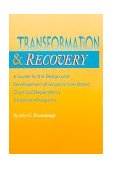Resources for Acupuncture in Chemical Dependency Treatment and Recovery

In 2001, Laura Cooley, L.Ac., a Registered Trainer for the National Acupuncture Detoxification Association in Texas, had an opportunity to make an outreach presentation to a group of criminal justice planners. Republican Congresswoman Kay Granger was in the group and received a demonstration treatment. She returned to Washington committed to calling the Federal Government's attention to acupuncture's benefits. She called CSAT Director Dr. Westley Clark and requested a meeting. Clark was aware that acupuncture was being widely used in treatment, and with the political support provided by Granger, made the decision to develop the TIP under the leadership of Dr. Trachtenberg, who was then CSAT's Director of Pharmaologic and Alternative Threrapies,.
Trachtenberg assembled a consensus panel of experts from the field. The panel co-chairs were Michael O. Smith, MD, Director of Lincoln Hospital Recovery Center in New York, and Janet Konefal, Ph.D., M.P.H., C.A., Associate Professor and Chief, Division of Complementary Medicine, Department of Psychiatry and Behavioral Sciences at the University of Miami School of Medicine. The final editing of the TIP was assigned to Arthur Margolin, Ph.D., Research Scientist at Yale University School of Medicine. (click here for complete list of the consensus panel participants.)
The Process was subsequently abandoned for lack of strong advocacy.
previous
- Read FAQs in Sequence - next
Index of Articles - Links - Home
Scroll Down for More "Frequently Asked Questions"
How many clients can be treated at once?
How often do clients need to be treated?
How long to clients have to keep having treatments?
Does it matter what time of day the acupuncture is provided?
What
national organizations support acupuncture in treating addiction? What
resources are available to support us if we decide to do it?
Does
the acupuncture program have to include herbs or nutritional supplements?
What
is the history of how acupuncture began to be used in chemical dependency
treatment?
What
does the acupuncture clinic look like exactly?
How
much space and extra equipment will we need to do it?
How
do we clean or dispose of the needles after they are used?
How
does acupuncture fit with drug testing?
How
do we find and train people to do the needling?
Could
we just try it experimentally to make sure it's a good fit for us?
What
technical assistance will be required to start and maintain an acupuncture
component?
Is
it compatible with harm reduction?
Is
it compatible with 12-Step or abstinence-based treatment approaches?
Is
it appropriate for mandated or court-referred clients?
Is
it appropriate for adolescents?
Is
it appropriate for pregnant women?
Is
it appropriate for people with co-morbid psychiatric problems?
Is
it appropriate for people with HIV/AIDS?
Is
it appropriate in methadone programs?
Is
it appropriate in residential programs?
What
training is required for current program and administrative staff?
What are the steps we should take to add an acupuncture component?
